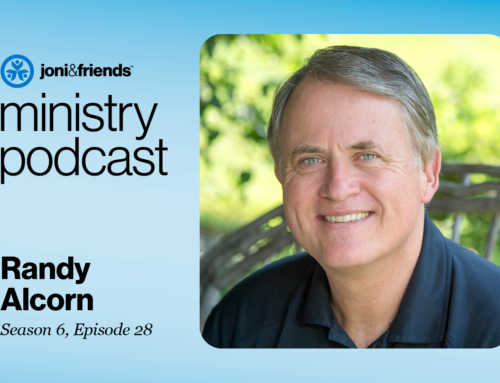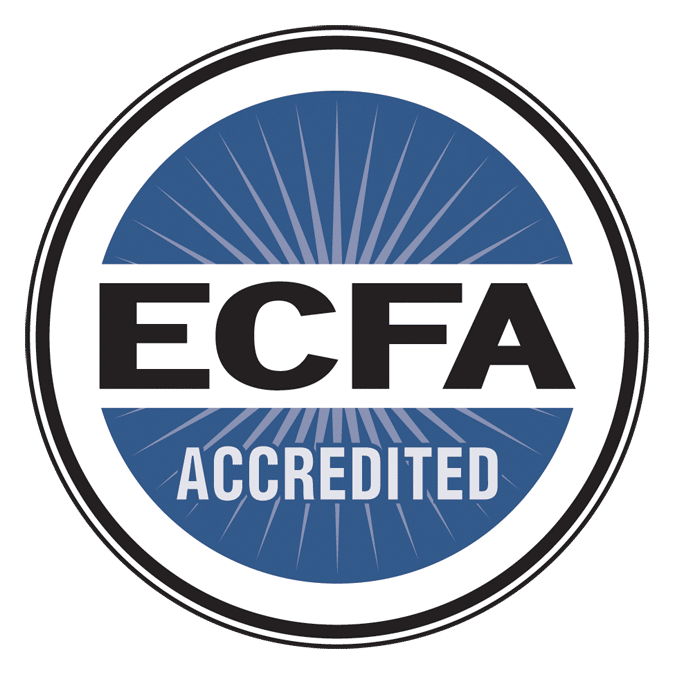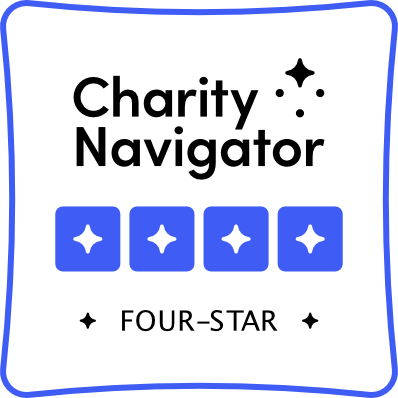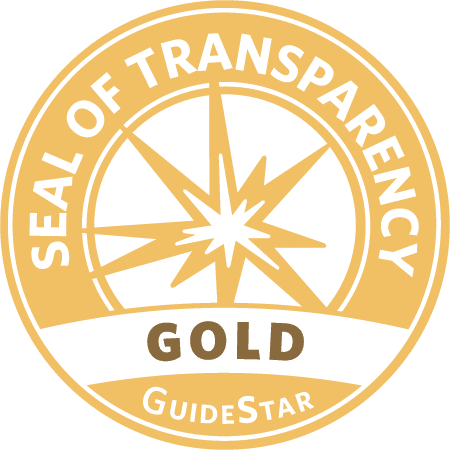The Meaning of Illness, Healing, and Wholeness
Subscribe to the Joni and Friends Ministry Podcast

At age 29 Kay Toombs was diagnosed with multiple sclerosis (MS), an unpredictable disease of the central nervous system that has since caused paralysis and impacts every part of her life.
Living with disability and chronic illness for decades has inspired Kay’s life work.
As a Christian, professor, and author she has reflected and taught on issues related to illness, disability, caregiving, and healing.
Kay joins the podcast to explore the meaning of illness and share how wholeness is possible for all people, even in the face of disability, terminal illness, and death.
Do you live in fear of sickness or dying?
When Kay Toombs learned that she had multiple sclerosis, she was terrified. All she knew was that her disease was incurable and progressive. Anxiety gripped her as she interpreted everything—every dropped pencil or odd twitch—as a sign of her body and capabilities degenerating. Finally she resolved to change her perspective.
“I made a decision not [to] live in constant fear. So I learned to shorten my vision. And I think this is very important for people who’ve been given a prognosis that is uncertain because what we tend to do is project into the imagined future, which we always imagine is negative. And so I wouldn’t allow myself to do that. I decided that I would take each day as it comes… [And] I learned to focus on real, and not imagined, difficulties,” says Kay.
Not yet a believer when she received and processed her diagnosis, Kay sought meaning and hope in her circumstances. Reading the famous book Man’s Search for Meaning by psychologist and Holocaust survivor Victor Frankl provided her with a new lens for her experience.
In the book Frankl says: “Everything can be taken from a man but one thing: the last of the human freedoms—to choose one’s attitude in any given set of circumstances, to choose one’s own way.”
Kay found this idea very freeing. “It gave me control no matter what the situation was. I always had a choice as to how to act in that circumstance,” she says. Still, she had yet to find the ultimate meaning of both life and death…
Finding Faith Through Illness
“The Lord is close to the brokenhearted and saves those who are crushed in spirit.”
Psalm 34:18
Dealing with her illness and a failing marriage, Kay had what felt like a strange thought occur to her: There must be some meaning to this.
“I started to pray and God brought into my life a sweet Christian couple. They were actually the parents of a student who worked for me, and I started spending every weekend with them, and they took me to their church. They prayed for me, they prayed with me, and I began to feel the reality of God. I began to feel that I was not alone.”
Kay
In addition to experiencing God’s presence personally, Kay also witnessed the church in South Africa (where she lived) standing up for their faith in a striking way:
“[We] lived in South Africa, and we were part of a church in South Africa. And at the time, Apartheid was in force. And you know, the separation of the races, the government had this very strong policy. And the church that we belong to, if you preach the Gospel, that every person was in the image of God, you could be thrown into prison for saying something against the government. And I was very impressed by the fact that here were Christians who were standing up for what they believed.”
Kay
Curing vs. Healing
Kay’s first book, “The Meaning of Illness” focuses on the different perspectives of doctor and patient, the difference between seeing illness in terms of what the disease is doing to the body, as contrasted with the patient’s actual experience of illness. In this and many of her writings, Kay helps with key perspective shifts. For instance, naming the distinction between curing and healing:
“It is very important to recognize that there is a difference between curing and healing, and that one can be cured and not healed. And one can be healed and not cured. What healing means is that it’s possible to retain personal wholeness and integrity, a feeling of self-worth, a sense of meaning in your life regardless of the physical integrity of the body.
So how can a person be cured and not healed? Well, I think of perhaps somebody, a woman who has a radical mastectomy because of cancer and for whom the change in her body is a continued source of suffering. In that case, she may have been cured but not healed because she doesn’t feel whole.”
What is wholeness?
In her book, Living at the Boundary, Healing and Incurable Illness, Kay explains that the word healing shares the same word as the word whole. She illustrates what this means, especially for people with a disability, or terminal or chronic illness:
“There was an interesting study where they talked to cancer patients, some of whom were terminally ill, and two thirds of them said that they felt themselves to be healthy. And by that they meant that they felt a sense of wholeness in their lives.
Now, the interesting thing is that this sense of wholeness was tied to what they called healing connections. It was tied to the sense of connectedness that they had to family, to other people, to friends, and for them, their sense of connectedness to God. And people who were most suffering were those who felt a sense of alienation, a sense of isolation from self and others, and a sense of meaninglessness.
So one of the things that I do say to people who have a chronic illness, you can be healed in the sense that I feel that I’m healed in the sense that I have a purposeful life. I’m surrounded by people who love me. I have connections, but I’m not cured and I’ll never, never be cured.”
Kay
God Opens Doors…
Before coming to Christ, Kay focused on the way cultural values shape the experiences of illness and disability. Then when she came to God, he showed her how to use her former point of view to help illuminate the Christian view of illness, suffering, and dying—and the ultimate meaning of life—for others.
God provided opportunities for Kay:
In Writing….
“That’s how the books Living at the Boundary and How then Should We Die came about. So why did I write about physicians assisted suicide? Well, I was always interested in end-of-life issues and medical ethics, and became very concerned about how cultural values have pushed us into the acceptance of physician assisted suicide, and what that tends to say about people with disabilities. The assumption is they don’t have lives that are worth living. And so that’s what caused me to go ahead and write that book.”
In Speaking…
“God opened the door for me then to go speak to nurses and doctors around the country, up around North America and Europe, and to tell them how important it is to pay attention to the patient’s experience, particularly in the case of chronic illness and terminal illness, where you can’t just fix something and everything is okay.”
In Teaching…
“When I was teaching at Baylor, I said, ‘Well, this is an opportunity to talk to students who are going be doctors and nurses.’ So I started a, a medical humanities course where I would get pre-med students and we would talk about the experience of illness. And we read literature about the experience. And it really was my experience that these kids will come in—they were young, healthy, and didn’t know anything about illness or disability—but by the end of the class, they really did have a sensitivity towards the issues that those of us living with illness do face.”
What makes life worth living?
“Do you not know that your bodies are temples of the Holy Spirit, who is in you, whom you have received from God? You are not your own; you were bought at a price. Therefore honor God with your bodies.”
1 Corinthians 6:19–20
Kay points out that in modern culture, “there is an emphasis on youth, beauty, physical fitness as an end, not necessarily as a means. So in the eyes of the able-bodied (and many of us want to say the temporarily able-bodied), people with people with disabilities are often considered to have lives that are not worth living.”
Take the case of physician-assisted suicide and euthanasia. Kay shared the findings of a study done on emergency care workers, who are the first people in the hospital to see somebody who comes in with a spinal cord injury.
The findings: “Only 18% of emergency care workers said that it would be acceptable to them to live with a spinal cord injury, whereas 92% of people living with a spinal cord injury said that they were very happy to be alive and they had a meaningful life.”
Kay’s Personal Testimony
“When I look back on my life, The one thing I know for sure is that if I had not had MS, I would never have considered focusing on these topics. And so, my illness has been the foundation for all my life’s work and has given me a wonderfully meaningful life for which I am very grateful.”
Kay
Like the 92% of people living with a spinal cord injury, and like Joni Eareckson Tada, who has lived a fruitful, Spirit-filled life through decades of quadriplegia, Kay knows that the hope and purpose of Christ can transcend and transform every hardship—including whatever hardships you face in your own life.

A Place of Healing
“If God can heal me, why won’t He?” Joni Eareckson Tada takes you with her on an intimate journey through foundational questions about healing, suffering, pain, and hope.











